Affiliate links on Android Authority may earn us a commission. Learn more.
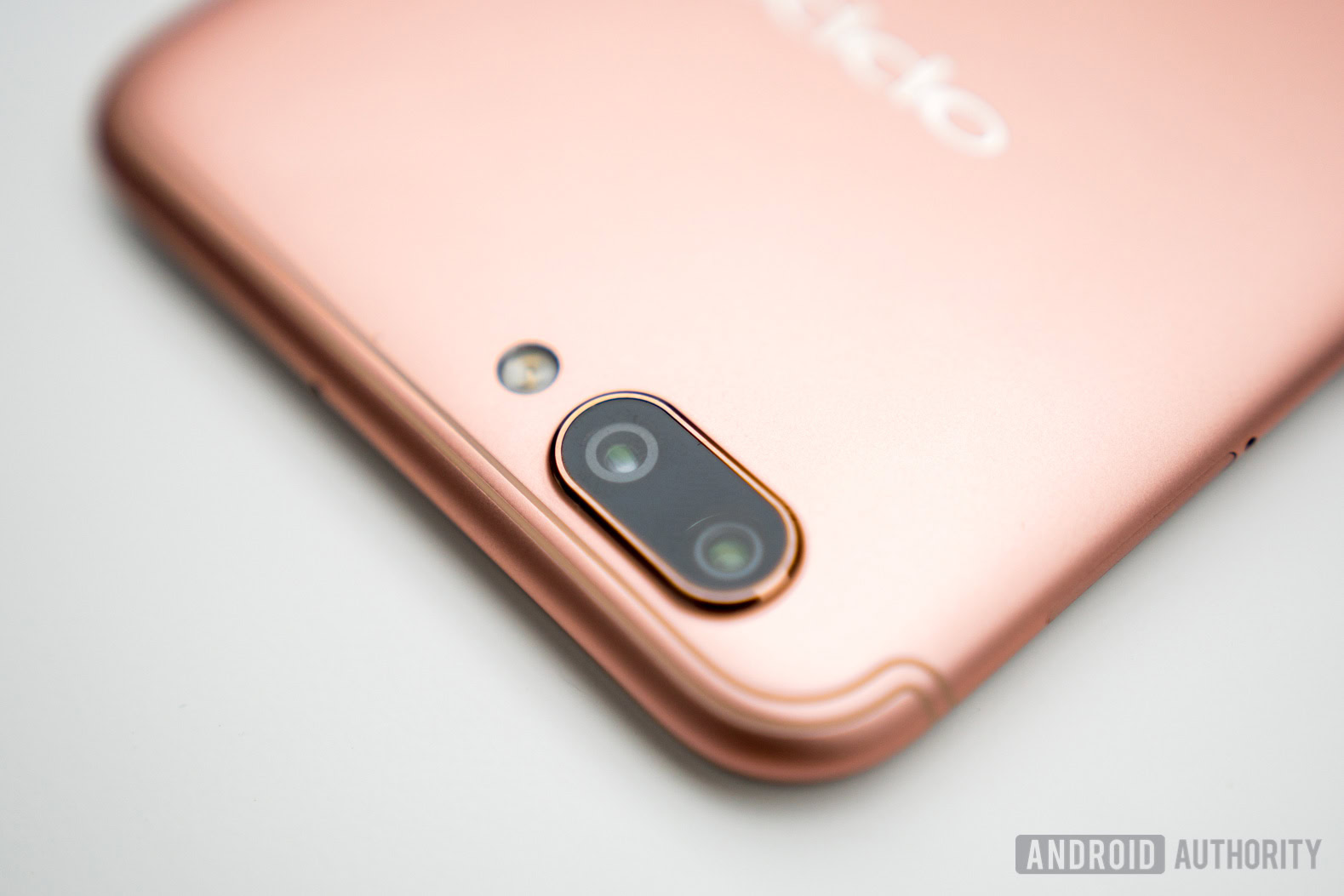
OPPO R11 review
July 7, 2017
OPPO R11
What we like
What we don't like
Our scores
OPPO R11
OPPO certainly isn’t a name we hear very often in the West. Travel pretty much anywhere in China, however, and you’ll be amazed at just how much you see the italicized green logo.
OPPO’s targeted success is understandable. By listening closely to their fan base, OPPO has repeatedly delivered experiences that Chinese users want. OPPO’s products have not only been consistently well built, but they’ve also been very much inspired by the Apple iPhone in both hardware and software design.
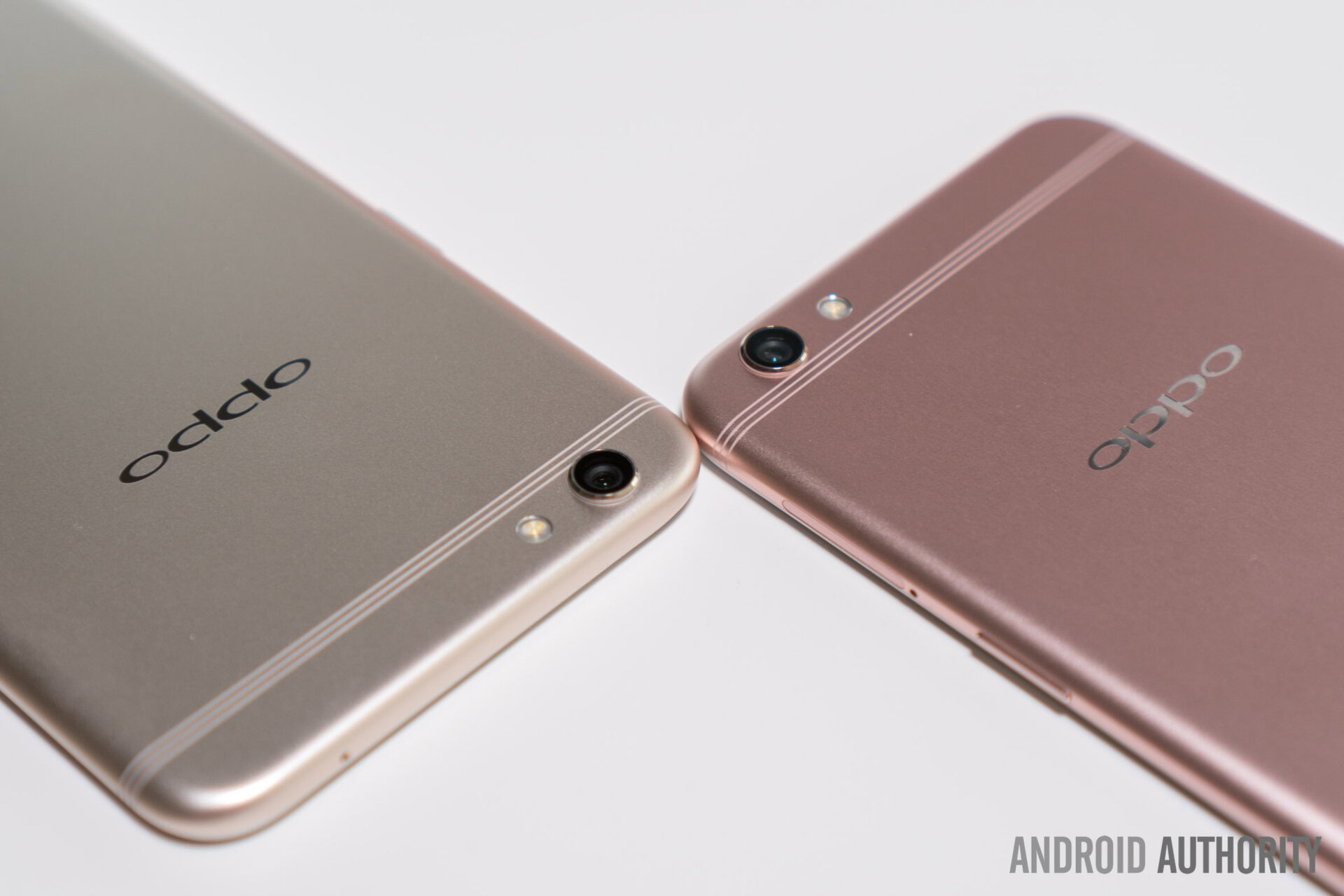

Staying true to form, OPPO has just released the R11. This is the follow-up to the R9s, a smartphone we reviewed and praised for its camera earlier this year. The OPPO R9s sold extremely well, beating OPPO’s expectations to become their best-selling smartphone.
So, does the R11 have what it takes to continue the wave made by the R9s? Let’s take a look with our comprehensive OPPO R11 review!
Design
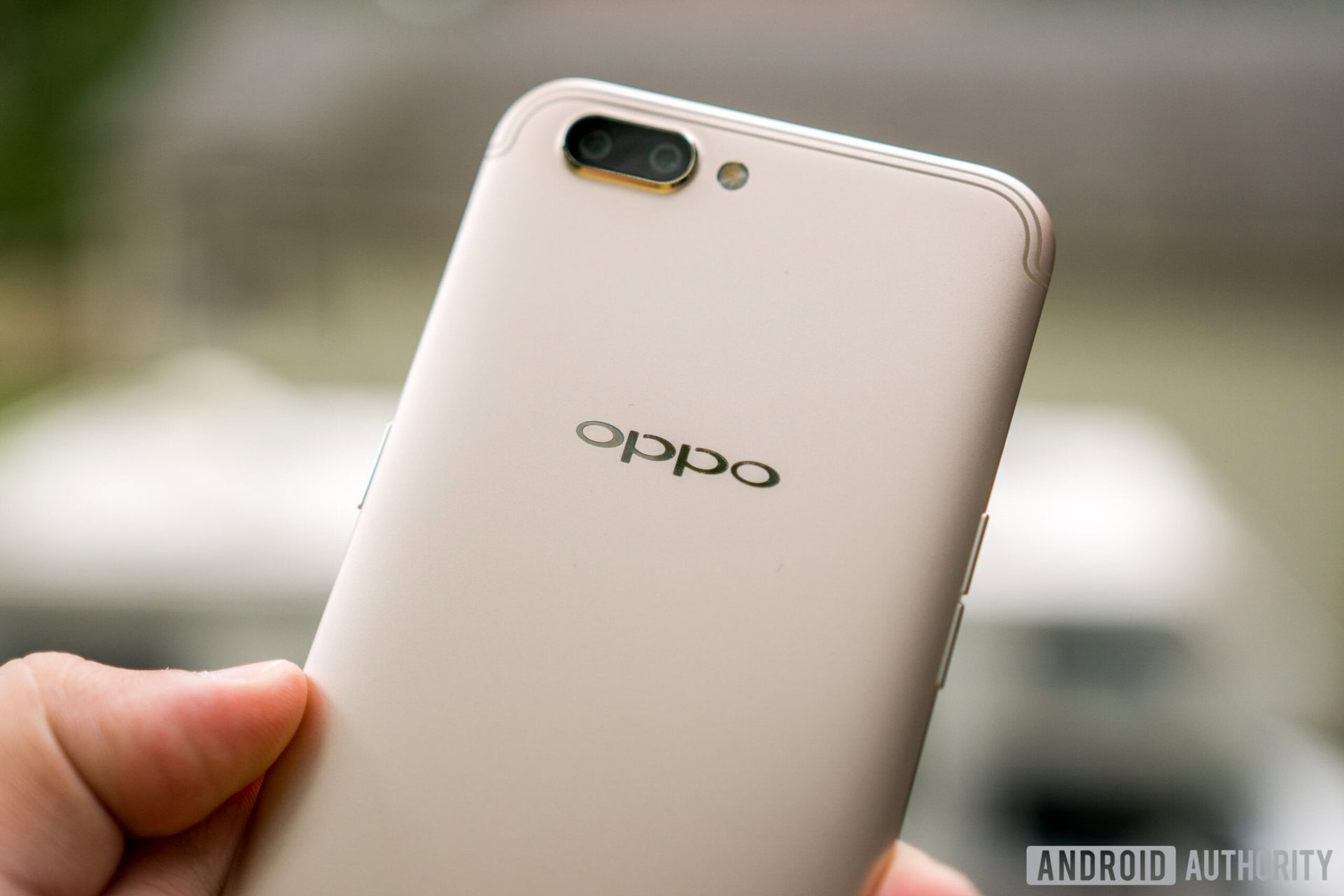
Okay, let’s get this out of the way immediately. Objectively, the OPPO R11 looks a lot like the iPhone 7 Plus. Some of OPPO’s design choices, like the front layout, seem only a bit familiar. Others, like the dual-camera configuration, however, are comically similar to those of Apple.
Much of the criticism relating to the R11's design stems from a cultural misunderstanding
Much of the criticism relating to the R11’s design stems from a cultural misunderstanding. This phone has been catered for the Chinese market, where this design philosophy is viewed positively, almost as a way to pay homage to Apple. After all, the average person likes the iPhone’s design, and the OPPO R11 is a phone for the average person.
That’s not to say that we shouldn’t have an ethical discussion about such practices, but rather that we should try to better understand our own perspectives and how they relate to those of others. If you dislike the OPPO R11 because of its similarities to the iPhone, it probably isn’t for you anyway.
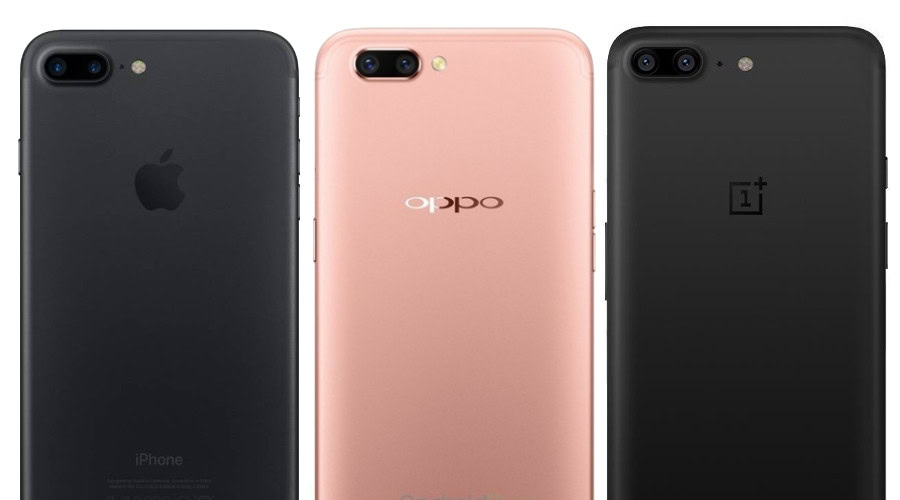
Of course, many have also pointed out the R11’s similarities with the OnePlus 5. Although OPPO and OnePlus share parent company BBK Electronics, OPPO has insisted that they did not collaborate with OnePlus for the R11. Instead, it seems, the two companies merely share some of the same suppliers, which is not uncommon in the Chinese smartphone market.
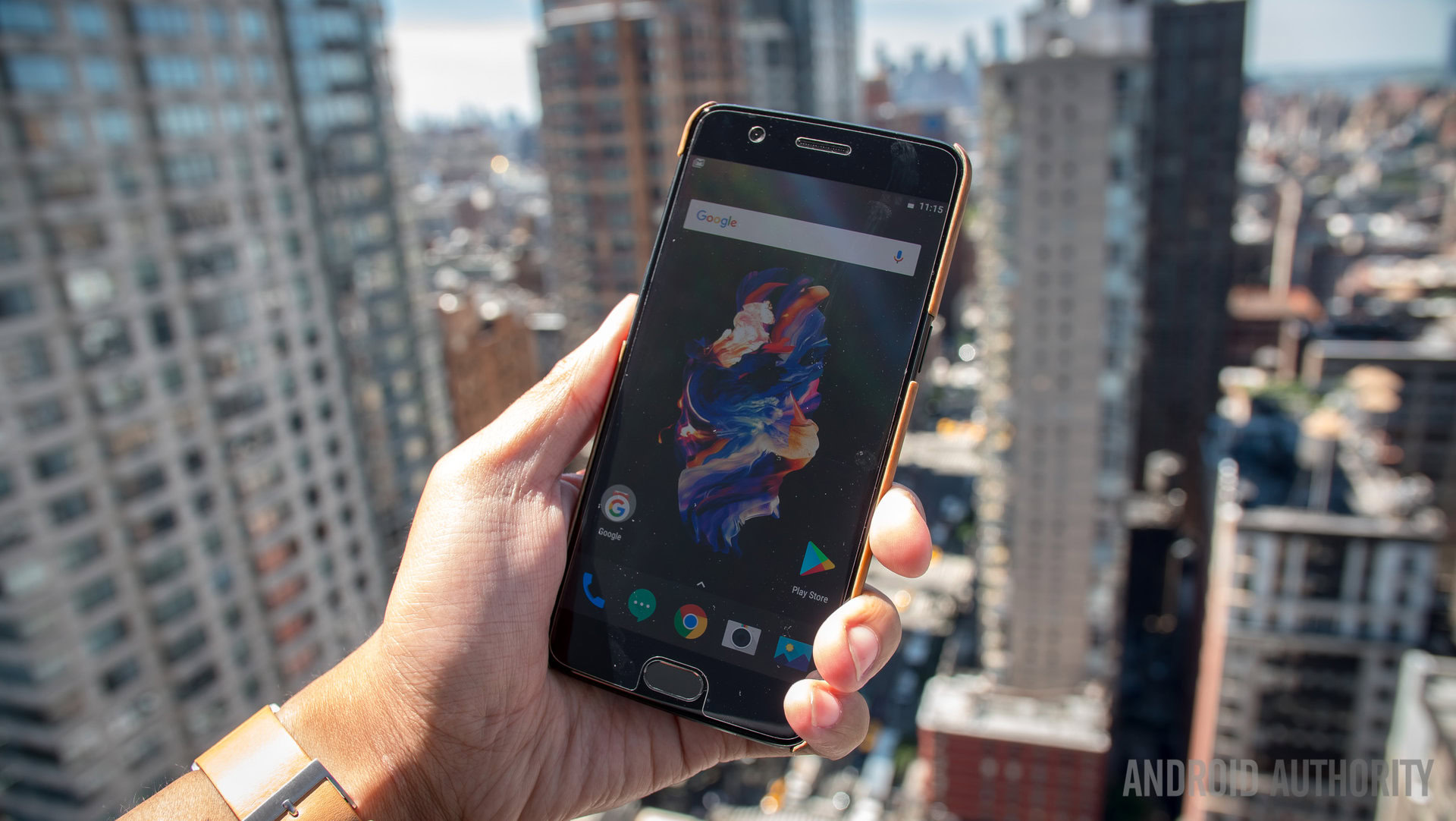
What’s most important to our critique is the design itself rather than the design philosophy. Overall, the R11’s design is really just a refinement of the R9s’. You’re getting the same premium metal unibody and, perhaps most importantly, the same great build quality. The body is still thin and light as well, at 6.8 mm thick and 150 g.
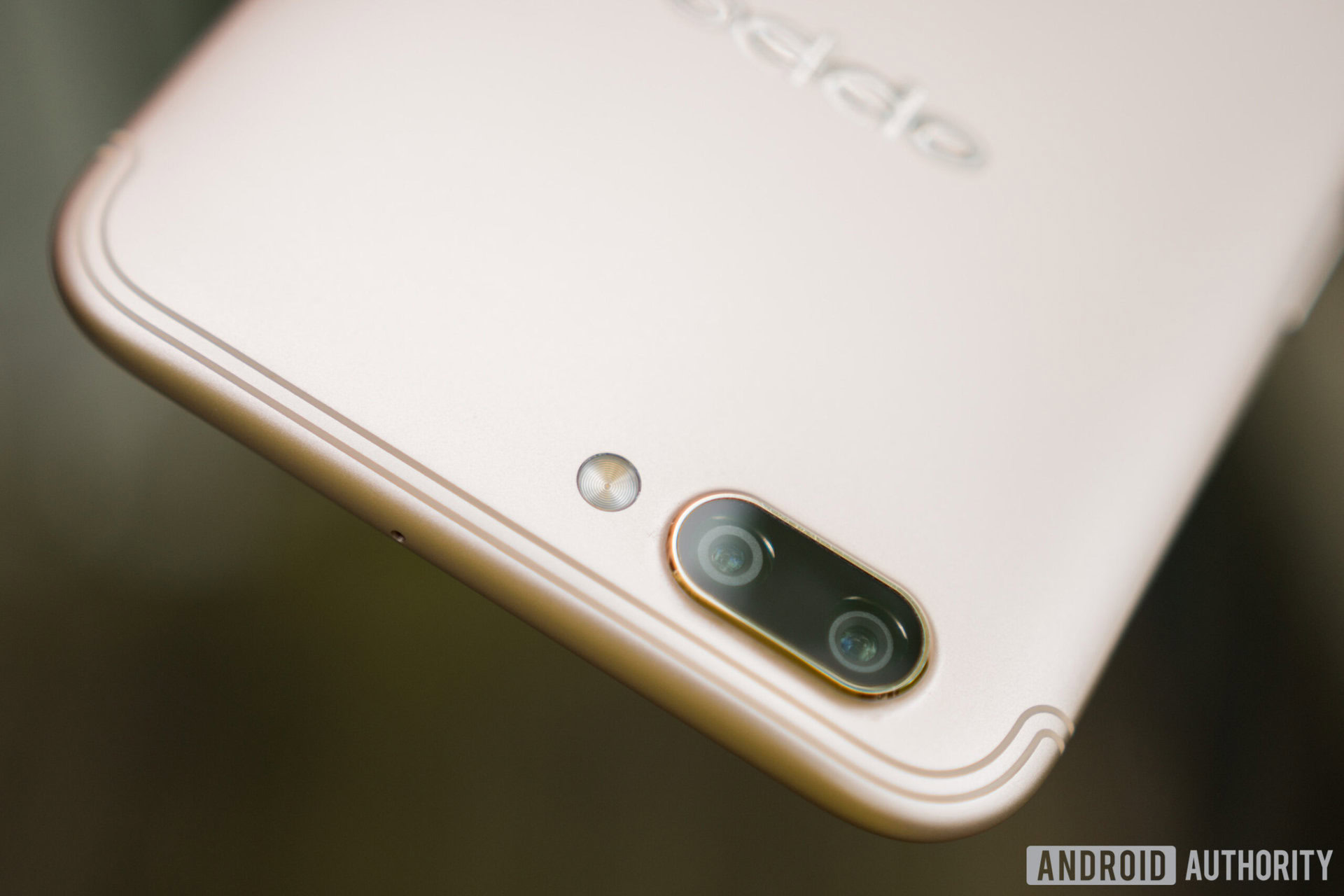
This time around, the rear is very slightly curved. The curve looks quite nice and, combined with the phone’s protruding side edges, makes the phone slightly easier to hold. In the hand, the R11 is just as premium as it looks. While metal bodies generally translate to a more slippery phone, I never felt that I was going to drop the R11 during the review period.
In the hand, the R11 is just as premium as it looks
Notably, the OPPO R11 has a unique curved antenna line design. Instead of a set of solid antenna lines, there’s a set of two thin lines. We prefer this antenna line design over the R9s’, and appreciate the slight cosmetic differentiation is offers.
As is the case with pretty much every mid-range smartphone, the OPPO R11 does not include any water resistance. It’s clear that this will remain a premium feature for the foreseeable future, so if you consider it a must-have, you’ll need to pay much more for something like the Samsung Galaxy S8.
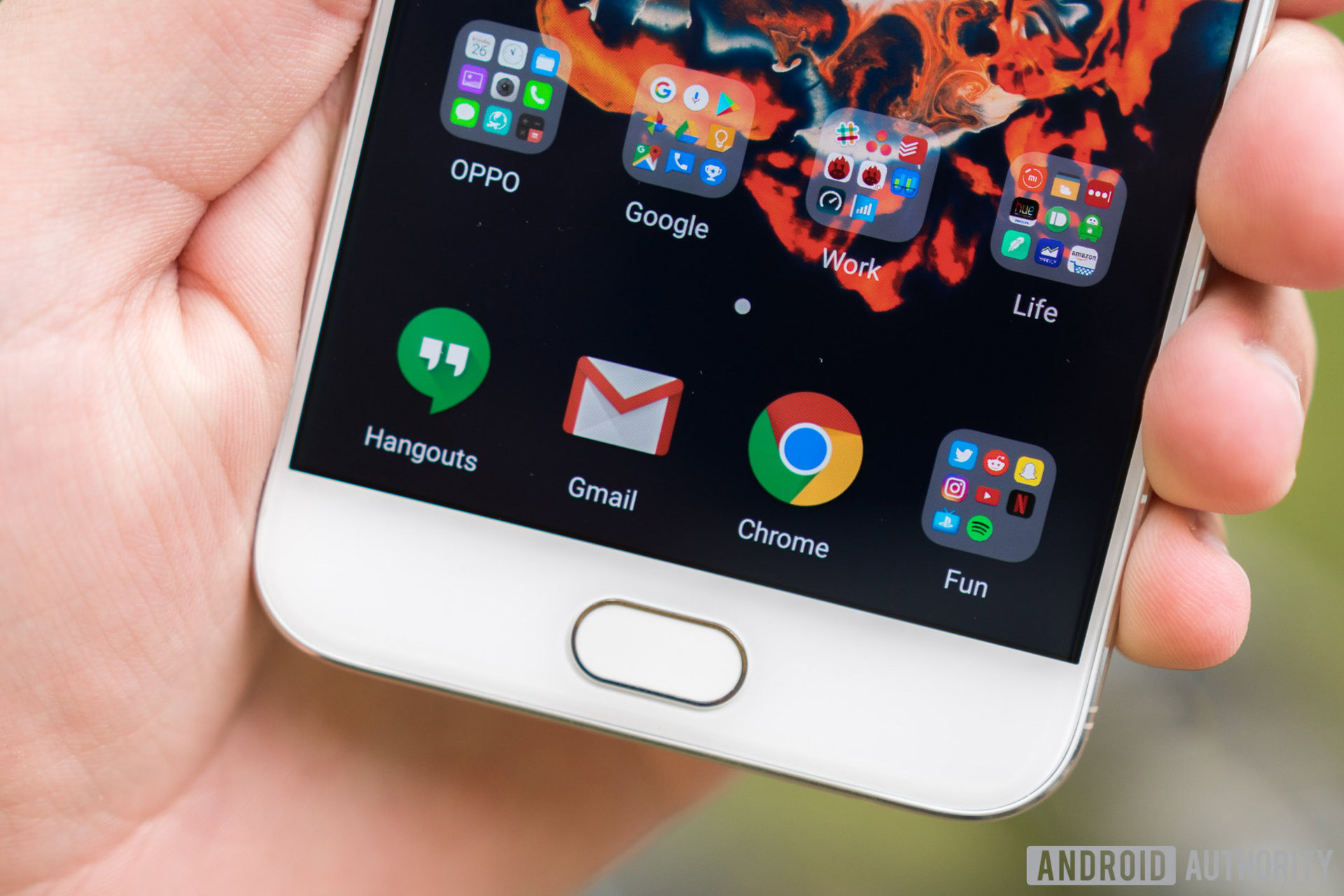
Although the capacitive back and multitasking keys are illuminated, the illumination is remarkably dim. This might bother some users at first, but it’s not very difficult to get used to.
Unlike the standard layout, the OPPO R11’s back key is to the right of the home button while the multitasking key is to the left. I personally prefer this layout as it makes it easier to use the back key when holding the phone with one hand.
With that said, OPPO could have avoided any controversy by instead implementing neutral keys and software remapping. Such an implementation would have allowed each user to customize the layout to their liking.
Between these two capacitive buttons is another capacitive button: the home button. While its metallic cutout may suggest a tactile key, this button does not press down. In addition to serving as the home key, this button doubles as an astonishingly quick fingerprint reader which can be used to unlock the phone, launch locked down apps, or view locked down files. The phone’s software allows you to easily customize what gets locked down.
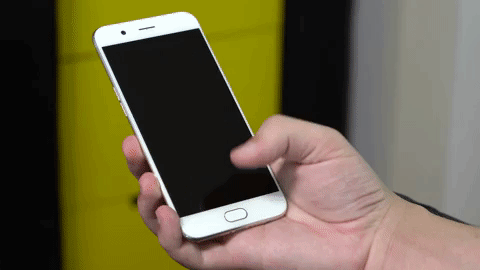
I have personally used dozens of different phones with fingerprint readers and I can confidently say that the OPPO R11’s reader is the quickest I have encountered and is likely the quickest available at the time of writing. A mere tap is enough to authenticate.
Display
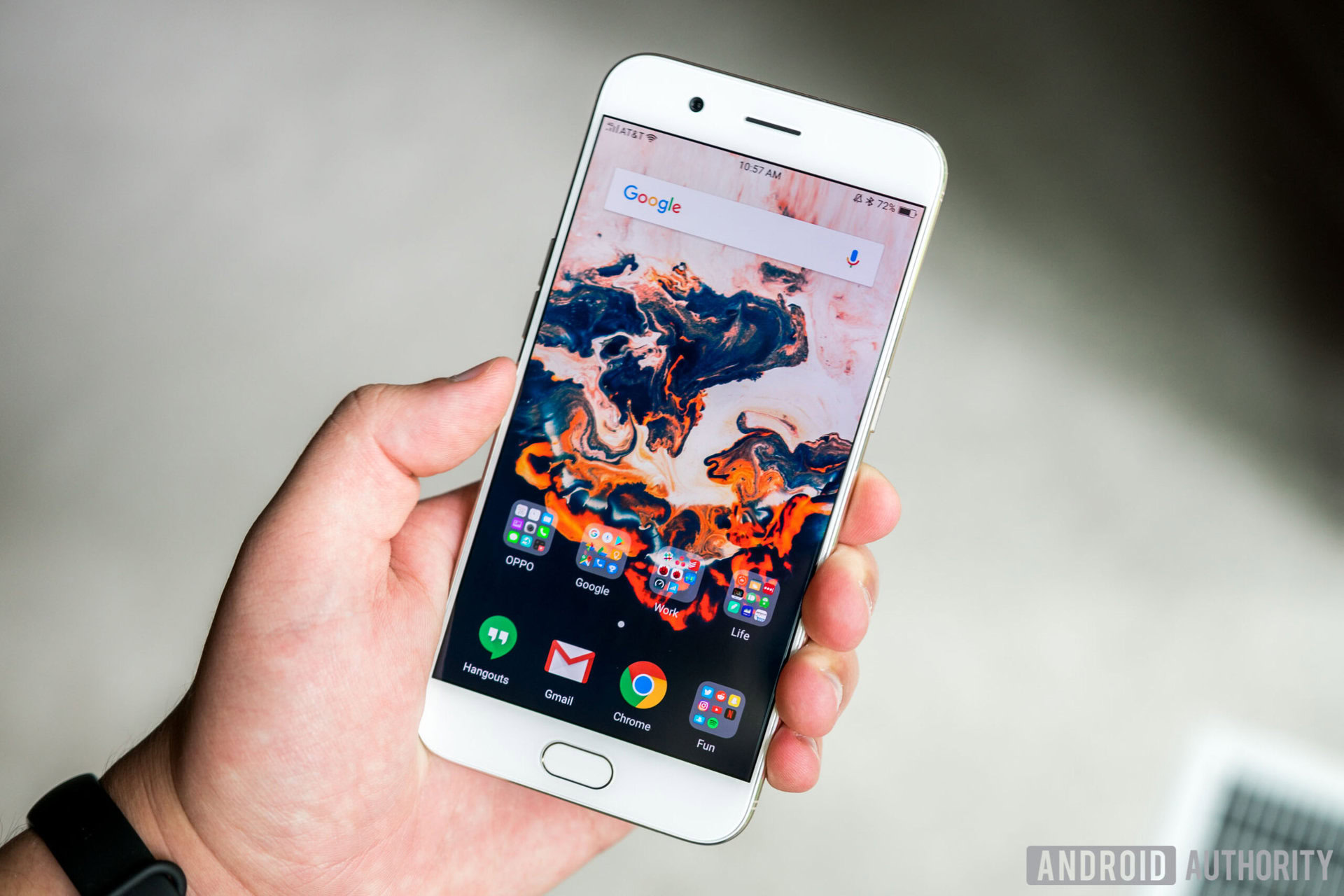
The OPPO R11 features a 5.5-inch 1080P display. While not quite quad HD, we can let this lower resolution slide given the R11’s competitive pricing. With that said, if you consider quad HD to be a must-have, you should know that there are similarly priced options out there with quad HD displays.
The colors are super punchy and well saturated
Resolution aside, the OPPO R11’s display looks great. It’s an AMOLED panel, so the colors are super punchy and well saturated. If you have used the OPPO R9s, you’ll find the display very familiar.
Unfortunately, the display’s maximum brightness is still a bit dim. This is especially problematic when using the phone outdoors, as it makes the display difficult to read. It’s fine on most cloudy days, but you definitely won’t be able to comfortably use the R11 on a sunny day at the beach.
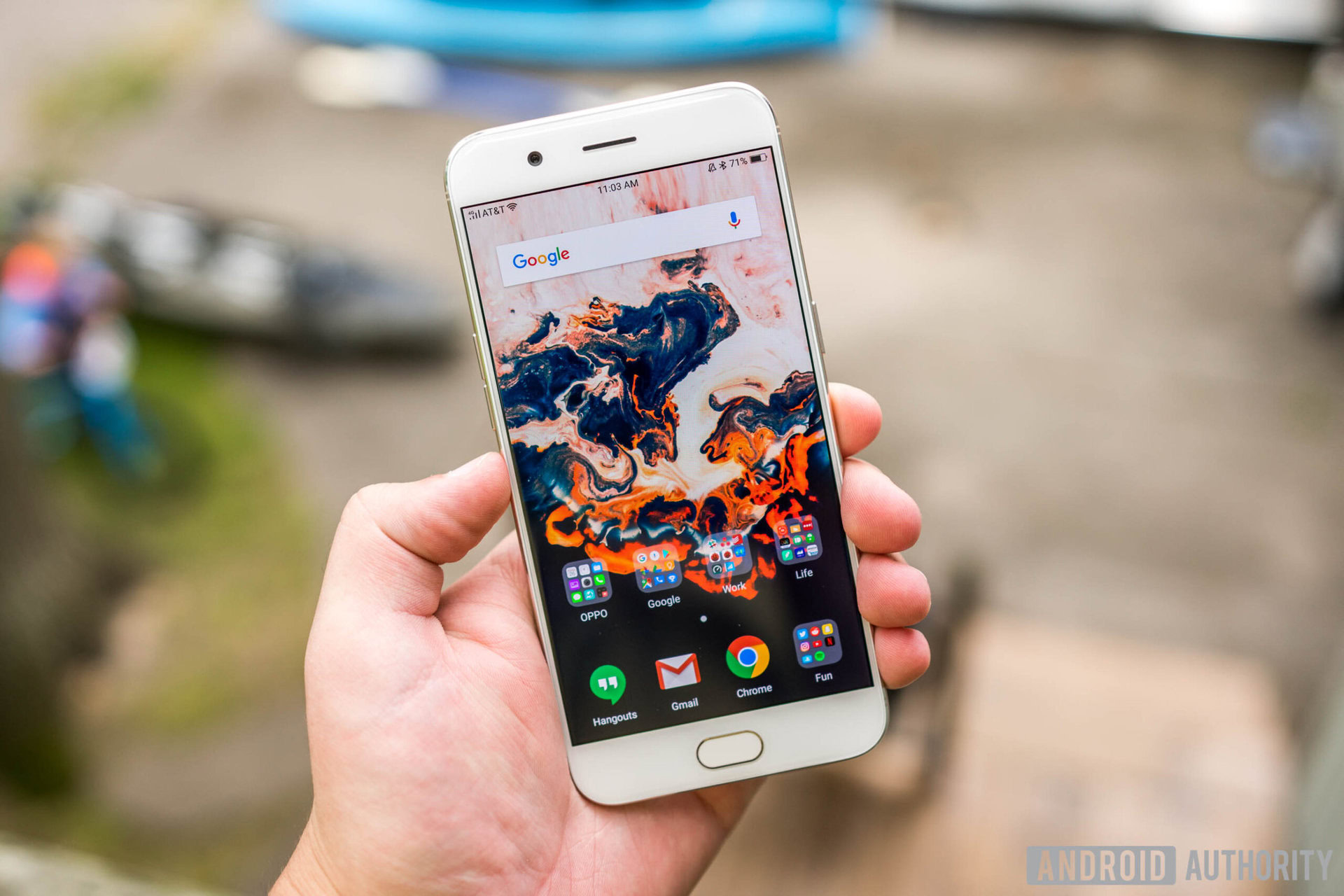
Unlike many of its competitors, the OPPO R11 does not include an always on display feature. This is odd as the AMOLED panel on the R11 would allow for virtually nonexistent battery drain. It’s probably not a deal-breaker for most, but it’s something to consider when weighing this against other options.
Another area of concern is the R11’s lack of a proper oleophobic coating. This essentially makes the display a fingerprint magnet. The R9s has this same exact issue, so it is disheartening to see OPPO make the same mistake once again.
None of the R11's main competitors make this compromise
While we understand the need to cut costs in a mid-range device, none of the R11’s main competitors make this compromise. Coming from virtually any other device, this issue can be infuriating as fingerprints collect easily but are not easily removed.
Performance
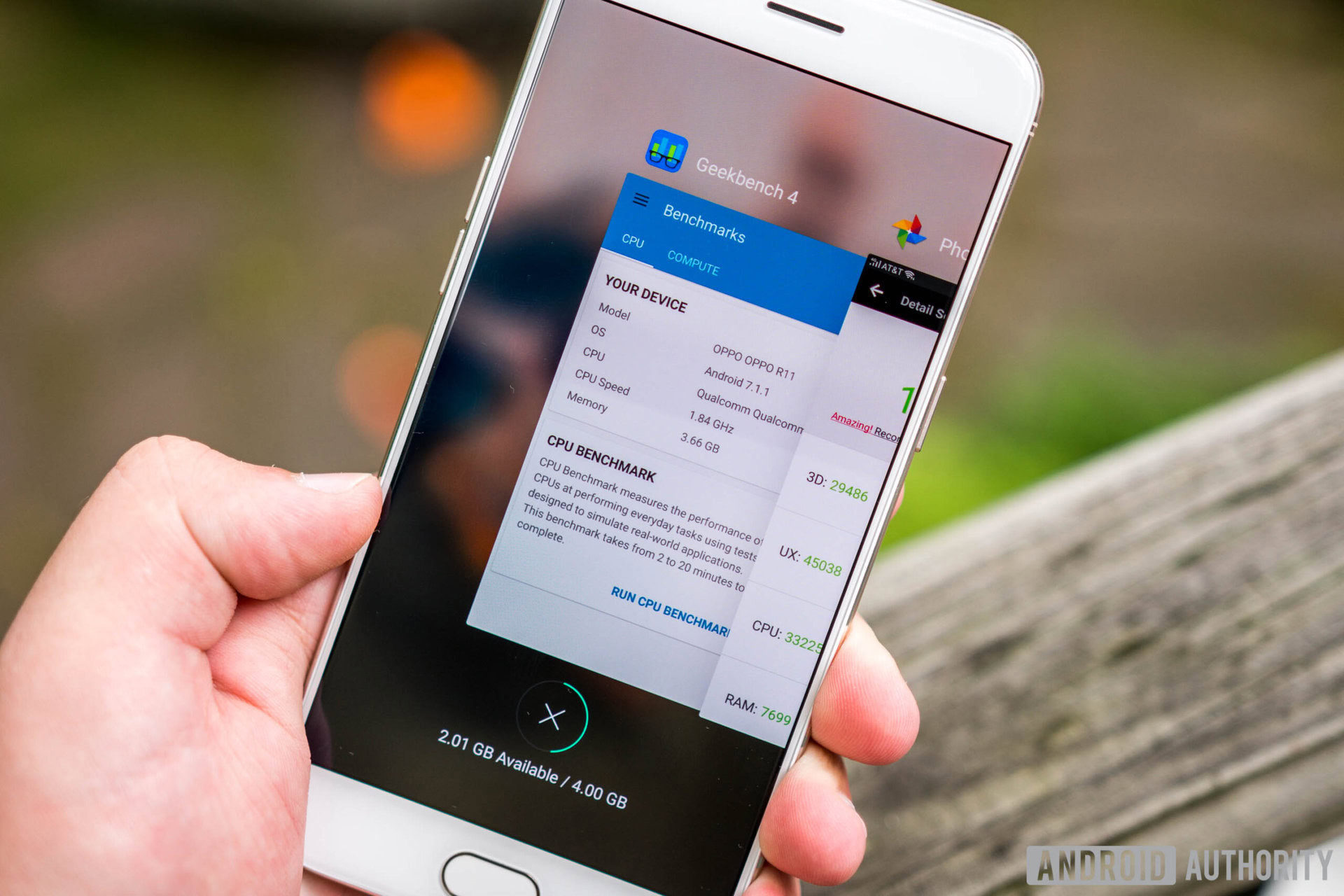
OPPO states that the R11 offers 20% faster CPU performance and 30% faster GPU performance from the R9s. This is because of an upgrade from the Qualcomm Snapdragon 625 to the Qualcomm Snapdragon 660. The Snapdragon 660 platform also includes the 14-bit Spectra 160 ISP, which is a first for Qualcomm’s 600 series and is important for processing images taken with the high-resolution camera.
Performance is easy to get used to at the very least
Everyday performance is mediocre. It’s firmly mid-range, unlike much of the “affordable flagship” competition. It can feel a bit sluggish coming from higher-end devices, but it’s not bad by any means. It’s easy to get used to at the very least.
While there is 4 GB of memory, we noticed that the phone’s software memory management is pretty aggressive. Even when using just two or three apps, the system often closed one or two of them in favor of lower memory utilization.
Hardware
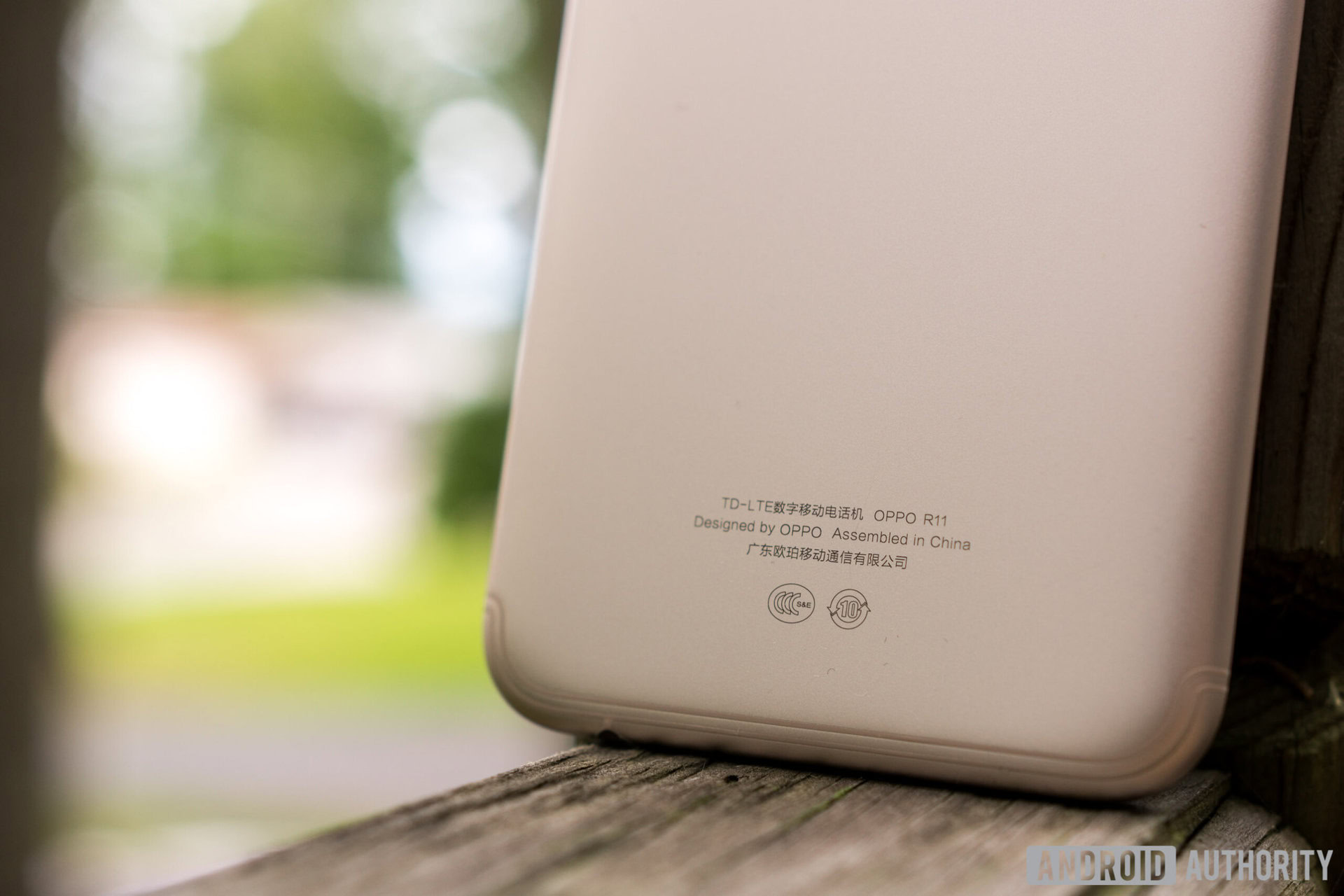
Unsurprisingly, the OPPO R11 is an unlocked dual-SIM smartphone, so you are free to use any two SIM cards simultaneously. This is a really great feature to have if you would like to combine a work and personal phone or travel frequently.
US 4G LTE support is still partial
Surprisingly, the Chinese OPPO R11 variant partially supports US 4G LTE. While some other Chinese smartphones also partially support LTE, this is still very rare for smartphones not intended for the US market. The support is still partial, however, so you won’t always have service where you usually would and carrier aggregation will be limited (i.e., not all available bands will be bonded resulting in limited speeds).
If you’re on AT&T, you can expect support for LTE bands 2, 4, and 5 but not LTE bands 12 and 17. If you’re on T-Mobile, you’ll be able to use LTE bands 2 and 3 but not LTE band 12. The phone is fully compatible with both AT&T’s and T-Mobile’s 3G networks. Please note that although there is support for CDMA networks as well, neither Verizon nor Sprint have certified the R11 for use on their respective networks.
Since AT&T primarily uses LTE band 17 and T-Mobile heavily relies on LTE band 12, we cannot recommend this phone for full-time use in the United States. Regardless, we applaud OPPO for including some US 4G LTE bands.

We imagine the primary goal of including more LTE bands was to improve roaming for global travelers. The R11 even includes the ORoaming app, which allows you to pay for cell phone service by the day in over fifty different countries.
The best part is that all of this happens on the phone, so you don’t need to get a local SIM card. The prices are quite affordable too. You can get one day and 300 MB of unthrottled data for as little as 4.9 RMB in Hong Kong (≈$0.72) or just 20 RMB in the US (≈$2.95). The app discloses the operator as well, so you won’t be left guessing at how good your service will be.
We’re not sure if this app will make its way to the global variant. Even if it doesn’t, travelers using the Chinese unit are almost certain to love this valuable feature.
Travelers using the Chinese unit are almost certain to love this valuable feature
Like its predecessor, the OPPO R11 does not support NFC. Although it’s not a widely used feature, we would have liked to see it here. If you want to be able to make mobile payments through apps like Android Pay, you will need to look at other options.
The OPPO R11 includes 64 GB of onboard storage and supports microSD card expansion up to 256 GB. You’ll need to give up the second SIM card slot in order to expand the storage. It’s great that OPPO is giving its users the option to expand nonetheless.
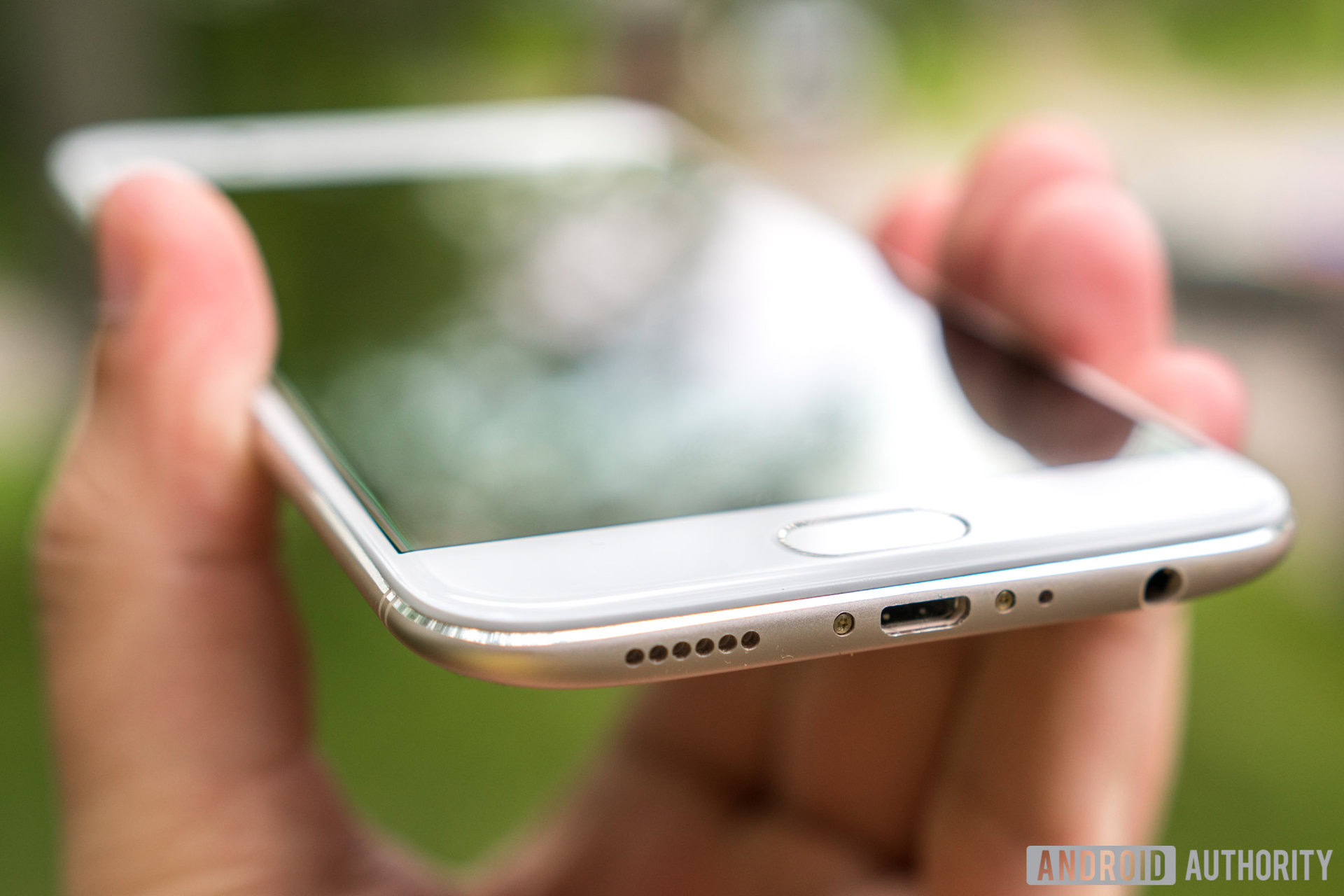
We were pleasantly surprised by the OPPO R11’s bottom-firing speaker. It’s moderately loud with minimal distortion, which we don’t always see on smartphones, let alone at this price. While front-facing speakers are still superior, the OPPO R11’s speaker is an above average performer.
The 3.5 mm jack has limited compatibility
For external audio, the R11 includes a 3.5 mm headphone jack. This is nice to have while the transition to USB Type-C audio is being made, as it allows users to use their old accessories. Unfortunately, however, we found that the 3.5 mm jack has limited compatibility.
My personal pair of headphones simply didn’t work when connected to the R11, possibly because the jack is too deep inside the phone. We’ve never had this issue before. If you have a favorite pair of headphones that you plan on using, you’ll need to be okay with the possibility that they may not work.
Battery life
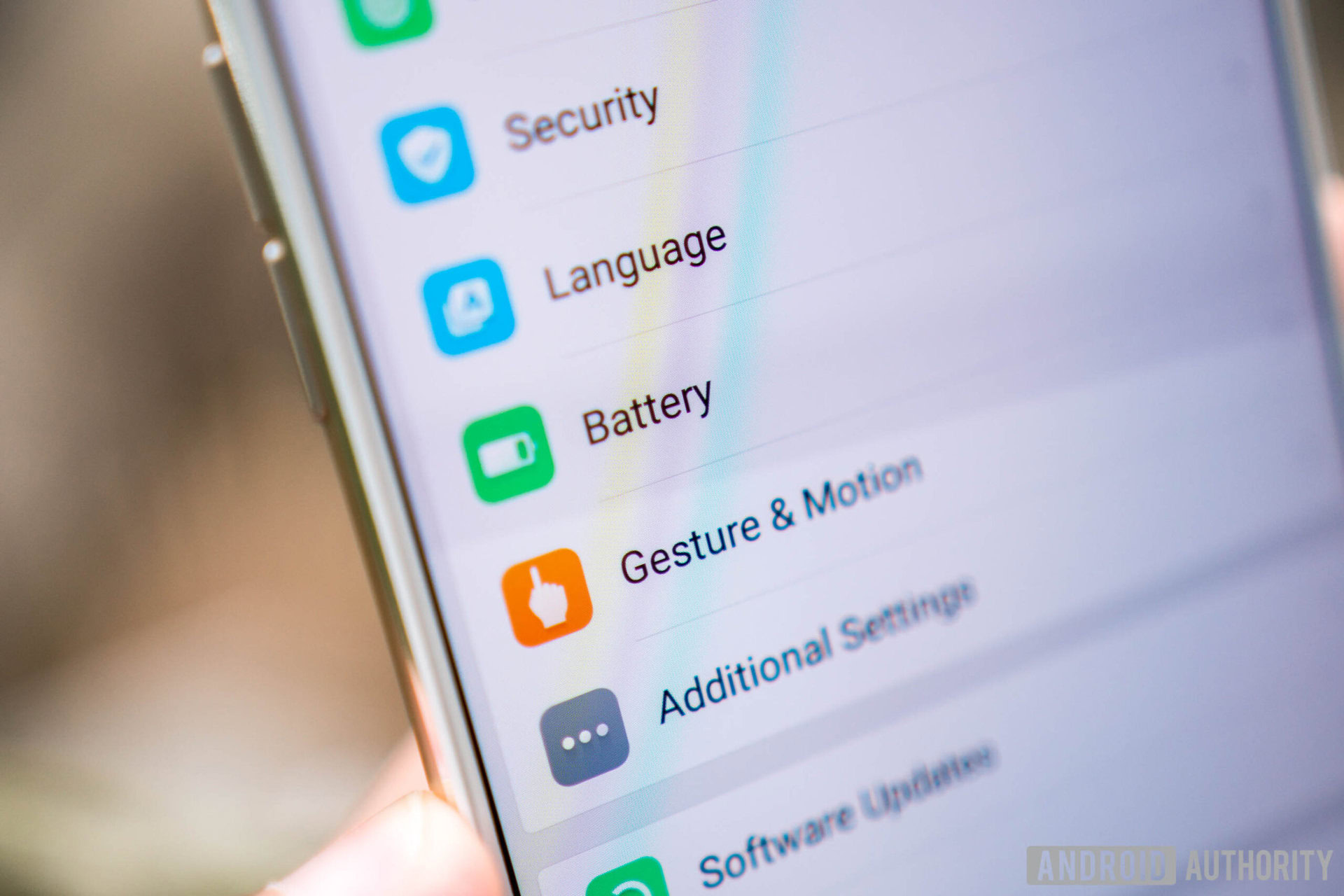
Unfortunately, we were unable to conduct our usual battery life tests with the OPPO R11. The system hides screen-on time numbers in the settings, so we reverted to a third-party app to keep track of usage. Sadly, the system also blocked this app from running in the background even after locking the app and disabling battery life optimizations.
Because of this, we can only share an anecdotal assessment. The 3,000 mAh battery seems to provide pretty good battery life as we never had trouble getting through a full day with moderate to heavy use. With lighter use, we were able to push the R11’s battery to one and a half to two days of use. This is about average, but we do not have any numbers to share at this time.
OPPO stuck with the outdated microUSB standard for the R11's charging port
Interestingly, OPPO stuck with the outdated microUSB standard for the R11’s charging port. In the past, we have respected this choice as it allows users to use their old chargers instead of making the transition to the newer reversible USB Type-C standard.
However, USB Type-C has been around for nearly two years now, so it is difficult to understand why OPPO has not yet made the switch on their flagship smartphone. As someone who has fully transitioned to Type-C, using the R11 as my daily driver meant often not having the right cable to charge the R11 when outside of home.
Thankfully though, OPPO has implemented their VOOC fast charging technology into the R11. This allows you to charge from 0 to 70 percent in just thirty minutes and to 100 percent in just sixty five minutes. That’s one of the fastest charging rates available today.
Camera
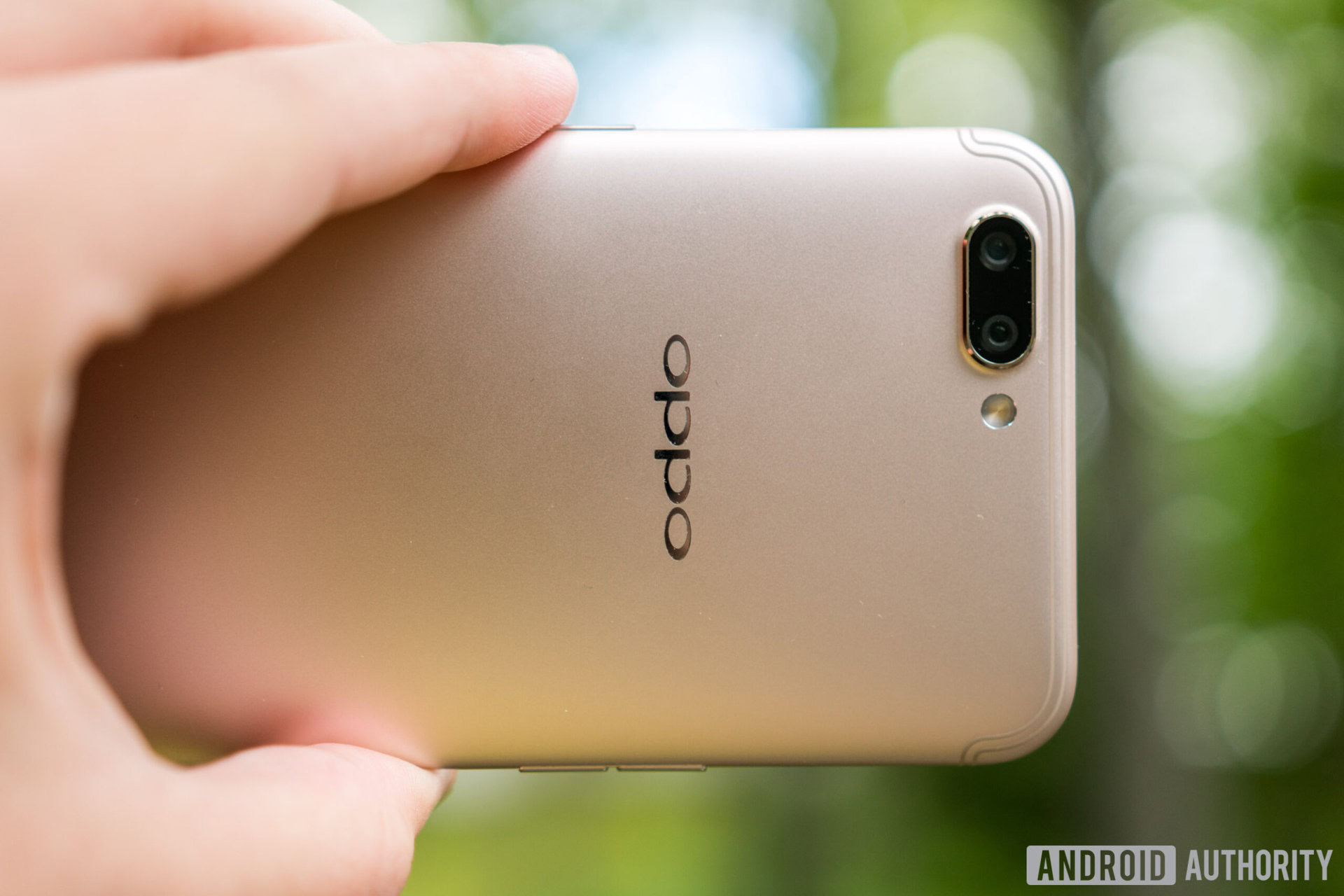
The cameras are the unmistakably highlight of the OPPO R11. For the rear, we’re looking at a dual-camera setup. The secondary camera has a longer focal length and effectively offers a 2x optical zoom from the primary camera. The primary camera is a 16 MP Sony IMX398 sensor with an f/1.7 aperture. On the other hand, the secondary camera is a 20 MP Sony IMX376 sensor with an f/2.6 aperture.
That sounds like a pretty beefy setup on paper, but we all know how great camera specs don’t necessarily translate to great camera performance. Image processing is a very important piece to the puzzle. Thankfully, OPPO made sure to pay careful attention to this detail by working with Qualcomm on a platform level.
In our experience, the R11's cameras live up to the hype
In our experience, the R11’s cameras live up to the hype. Images produced in good lighting were sharp, had accurate colors, and exhibited excellent dynamic range. Even when we took an image with the sun in the background, the R11 was still able to capture a good amount of detail in the shadows.
Images taken at 2x zoom were of about equal quality. The software processing is noticeably slower at about three to four seconds, however, as the phone has to combine the images taken by both cameras in order to produce the zoomed in image. We hope that OPPO will focus on improving the image processing speed of telephoto capture in future iterations.
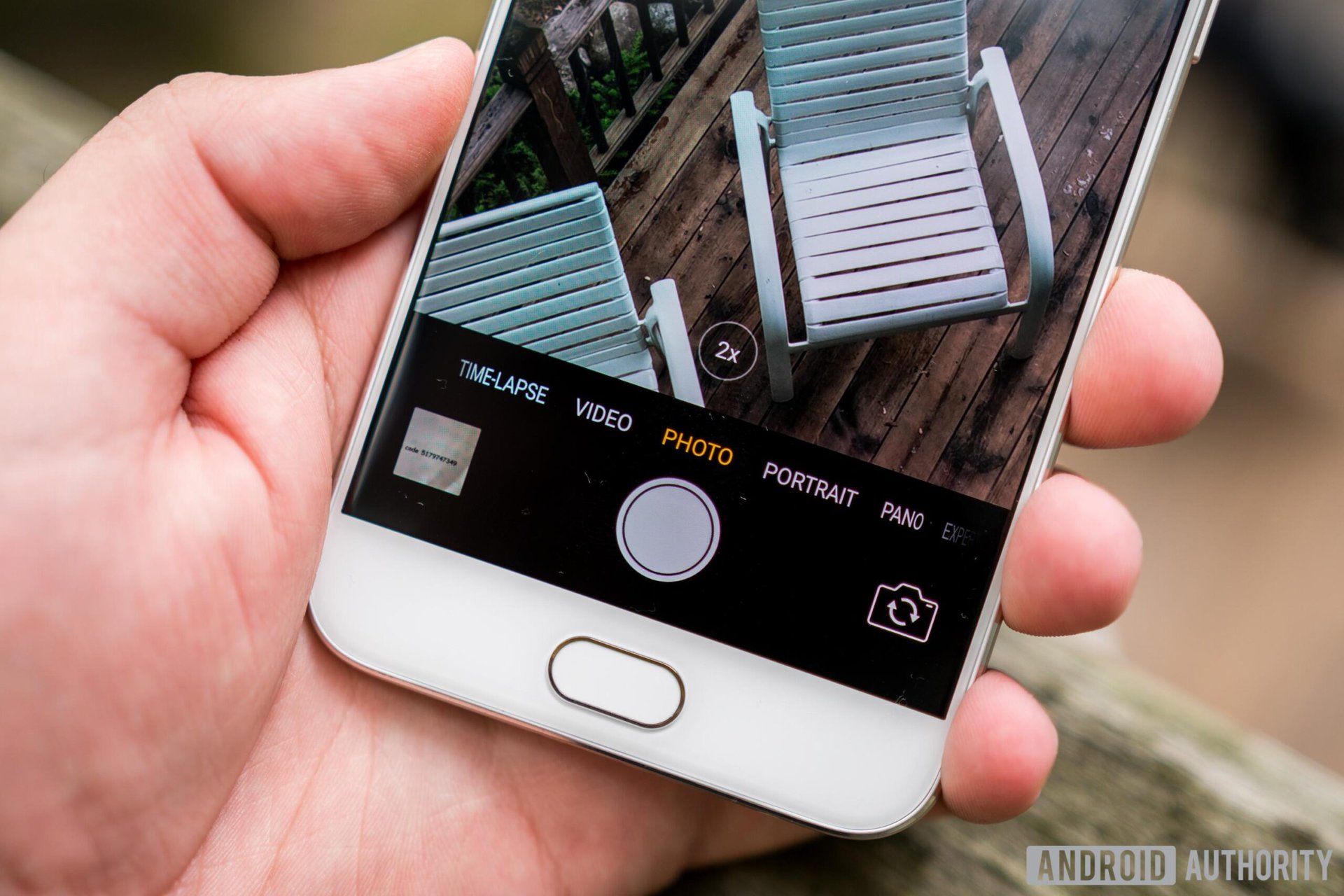
In addition to offering some optical zoom, the dual-camera configuration also allows a hardware/software hybrid depth effect. The depth effect is activated when shooting with the rear cameras in portrait mode. Pictures taken with the depth effect on had fairly convincing bokeh. The mode is not perfect with the edges, especially when lighting isn’t perfect, but the images are still generally good enough for sharing on social media.
When we took the R11 out at night, we noticed the cameras struggle a bit. Images expectedly become soft and noisy as the phone had to deal with significantly less amounts of light. We noticed a lot of lens flare too, especially with the secondary camera. On the plus side, color reproduction is still decent and images aren’t rendered as overly dark.
Overall, low-light images aren’t as impressive as those taken in ideal lighting conditions, but they still pack a fair punch when considering the phone’s price. We hope that OPPO will consider adding optical image stabilization (OIS) in a future iteration, as that would seem to help a tad by allowing for longer shutter speeds.
Video capture goes all the way up to 4K for the rear cameras, but the lack of OIS results in a picture that isn’t stabilized on the hardware level, so footage can look a bit shaky, especially at 2x zoom. Video quality itself is pretty good, although not exceptional.
The front-facing camera can also be used to capture video at up to 1080P. This is nice as some front-facing cameras are limited to 720P capture. Video quality with the front-facing camera is also pretty good.
For stills, the front-facing camera is a whopping 20 MP f/2.0 shooter and OPPO states that they treated it as important as the rear cameras. It produces very nice, detailed selfies, as you can see above. When shooting in portrait mode, an optional software beauty filter is added. This filter essentially smoothens and whitens your skin to “make you look more natural.” The six-level scale allows you to adjust the filter’s intensity to your liking.

The built-in camera app on the OPPO R11 provides an easy-to-use yet powerful interface
The built-in camera app on the OPPO R11 provides an easy-to-use yet powerful interface. You can tap the zoom icon to toggle between 1x and 2x zoom or you can slide along the icon to make smaller adjustments to the zoom. General controls including flash, HDR, timer, frame size, and filters are available from the top of the screen.
There is also an expert mode, which allows you to toggle between the rear cameras as well as change basic settings like white balance, ISO, and shutter speed. It provides a nice set of controls which we’re sure will satisfy most smartphone photographers.
Software
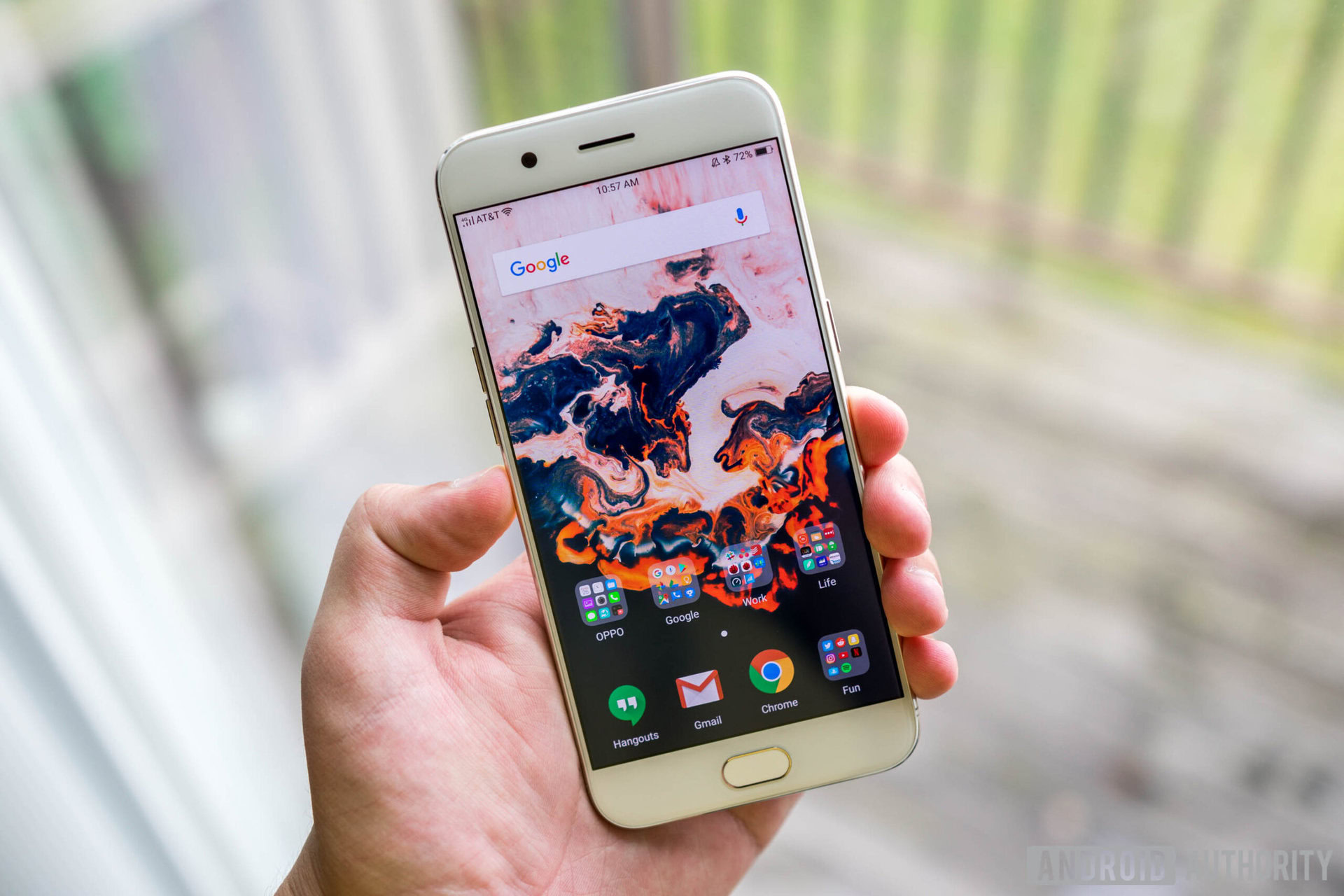
Although the OPPO R11 runs Android 7.1.1 Nougat out of the box, OPPO’s ColorOS 3.1 skin quite frankly makes the experience feel closer to iOS. The notification panel toggles have been replaced with a control center, the system apps use many design elements from iOS, and some features have been blatantly copied over. Take OPPO Share, for example. It’s a clear clone of AirPlay, down to the triangle in the logo.
To be clear, we understand OPPO’s reasoning for copying Apple’s software. Many Chinese skins use elements of iOS, but some do so better than others. Unfortunately, OPPO’s ColorOS just isn’t one of those skins. It feels as if the focus was placed on cloning rather than developing a great user experience.
The focus was placed on cloning rather than developing a great user experience
Take the notifications, for example. Unlike pretty much every Android skin out there, you can’t swipe right to dismiss them. Instead, you have to swipe left and then press “delete.” This is annoying as clearing a single notification takes two steps. There’s not a separate view in the notification panel that would prevent right swipes like there is in iOS, so this feels like an odd choice from a user experience perspective.
Speaking of notifications: we could not get our Chinese unit to send any from third-party apps. Every non-OPPO app from Hangouts to Slack did not send notifications. Even after enabling notifications for each app (they are disabled by default) and disabling all three levels of battery life optimizations (“Background Freeze,” “Abnormal Apps Optimization,” and “Doze”), we still could not receive any notifications.
In order to receive notifications, it appears that the screen must be on with the app either open in the foreground or locked in the background. Once the screen is off, notifications do not come through. As of the time of writing, our R11 unit is on the latest firmware. We hope that this issue will be fixed very soon as notifications are a critical feature of modern smartphones.
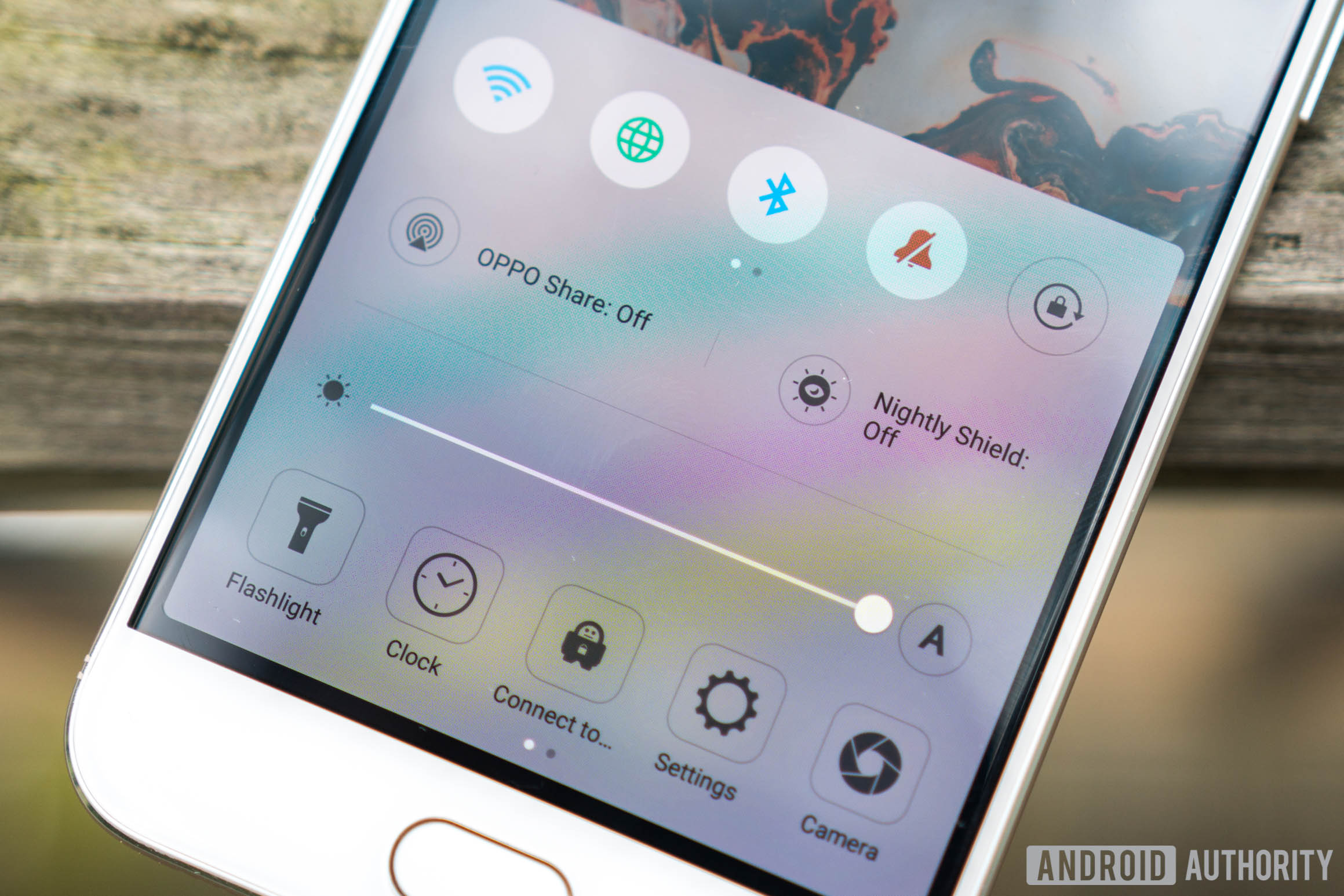
There are also a bunch of minor annoyances placed throughout ColorOS. You can only adjust one audio profile at once, a swipe down from the launcher brings up a search screen instead of the notification panel, and the system is constantly showing pop-ups to enable simple per-app permissions like mobile data use.
If you do decide to import a Chinese unit, please also keep in mind that Google services do not come pre-installed. This is perfectly normal for Chinese smartphones, as Google is blocked in China. It is fairly easy to install Google services directly from OPPO’s App Market, but it is not an official installation. For the best experience, you should instead purchase a global model.
Of course, there are still some positive aspects of ColorOS. The added security features, although done before, are a really nice touch as they genuinely make the user experience better.
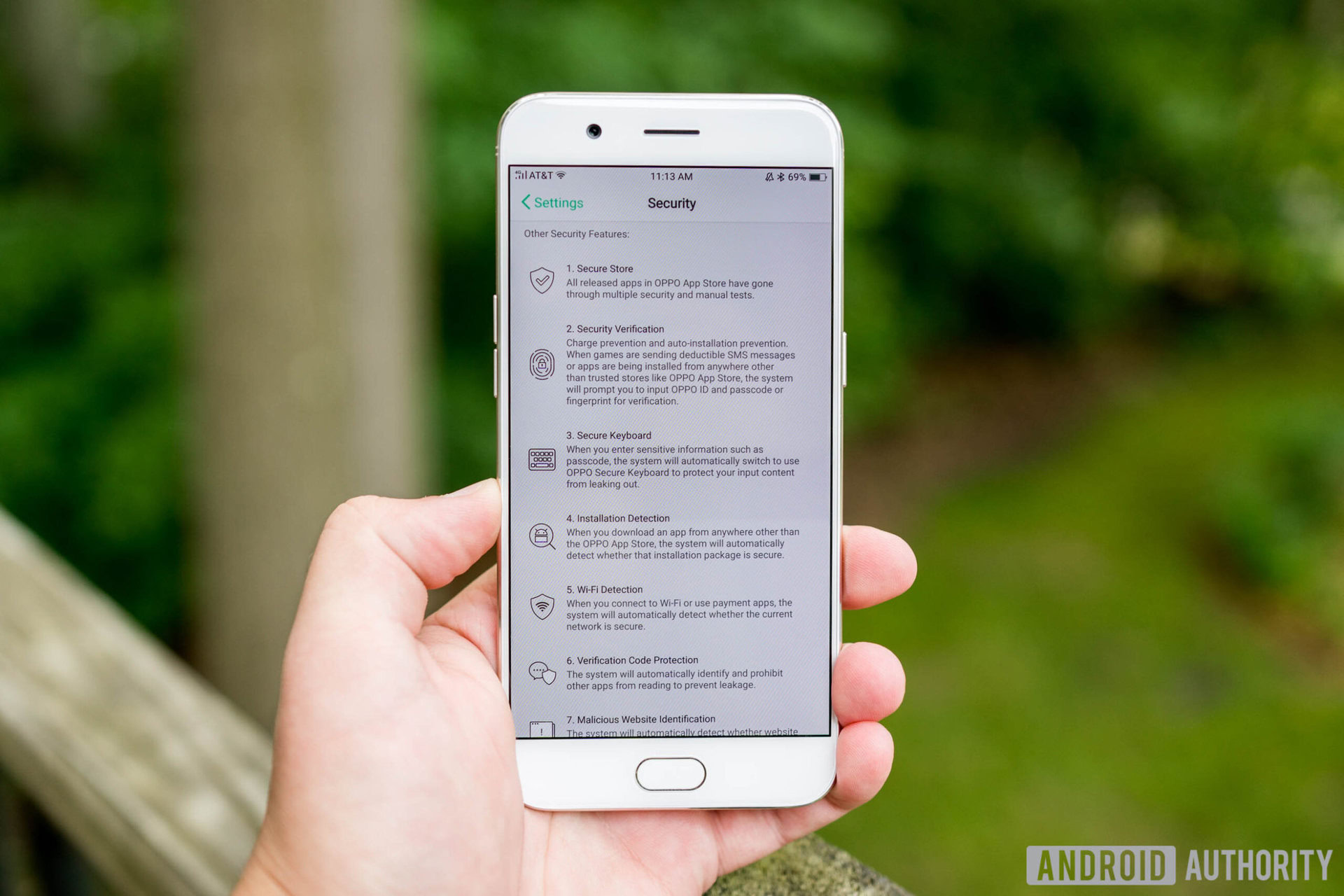
Overall though, ColorOS doesn’t do anything very interesting and weakens the Android experience rather than strengthening it. The ColorOS user experience simply doesn’t match the quality that we expect from an Android skin.
Specifications
| OPPO R11 | |
|---|---|
Display | 5.5-inch AMOLED 1920 x 1080 resolution 401 ppi Gorilla Glass 5 |
Processor | Octa-core Qualcomm Snapdragon 660 (4 x 2.2 GHz, 4 x 1.9 GHz) |
GPU | Adreno 512 |
RAM | 4 GB |
Storage | 64 GB |
Cameras | Rear camera Main: 16 MP Sony IMX 398 sensor, ƒ/1.7 aperture Telephoto: 20 MP Sony IMX 376 sensor, ƒ/2.6 aperture Front: 20 MP, ƒ/2.0 aperture |
Battery | 3,000 mAh Non-removable |
Ports | microUSB (USB 2.0) 3.5 mm headphone jack |
Water resistance | No |
Connectivity | Wi-Fi 802.11 b/g/n/ac dual band Bluetooth 4.1 A2DP, LE |
Software | Android 7.1.1 Nougat ColorOS 3.1 |
Dimensions and weight | 154.5 x 74.8 x 6.8 mm 150 g |
Gallery
Price
You can now purchase the OPPO R11 in China for 2999 RMB (≈$442). Color options include gold, rose gold, and black. We expect global availability to be announced very soon. Pricing and color options outside of China were unclear at the time of writing.
If you are looking for something larger, OPPO is also offering the OPPO R11 Plus. It’s essentially an R11, but with a 6.0-inch display, 6 GB of RAM, and a 4000 mAh battery.
Conclusion
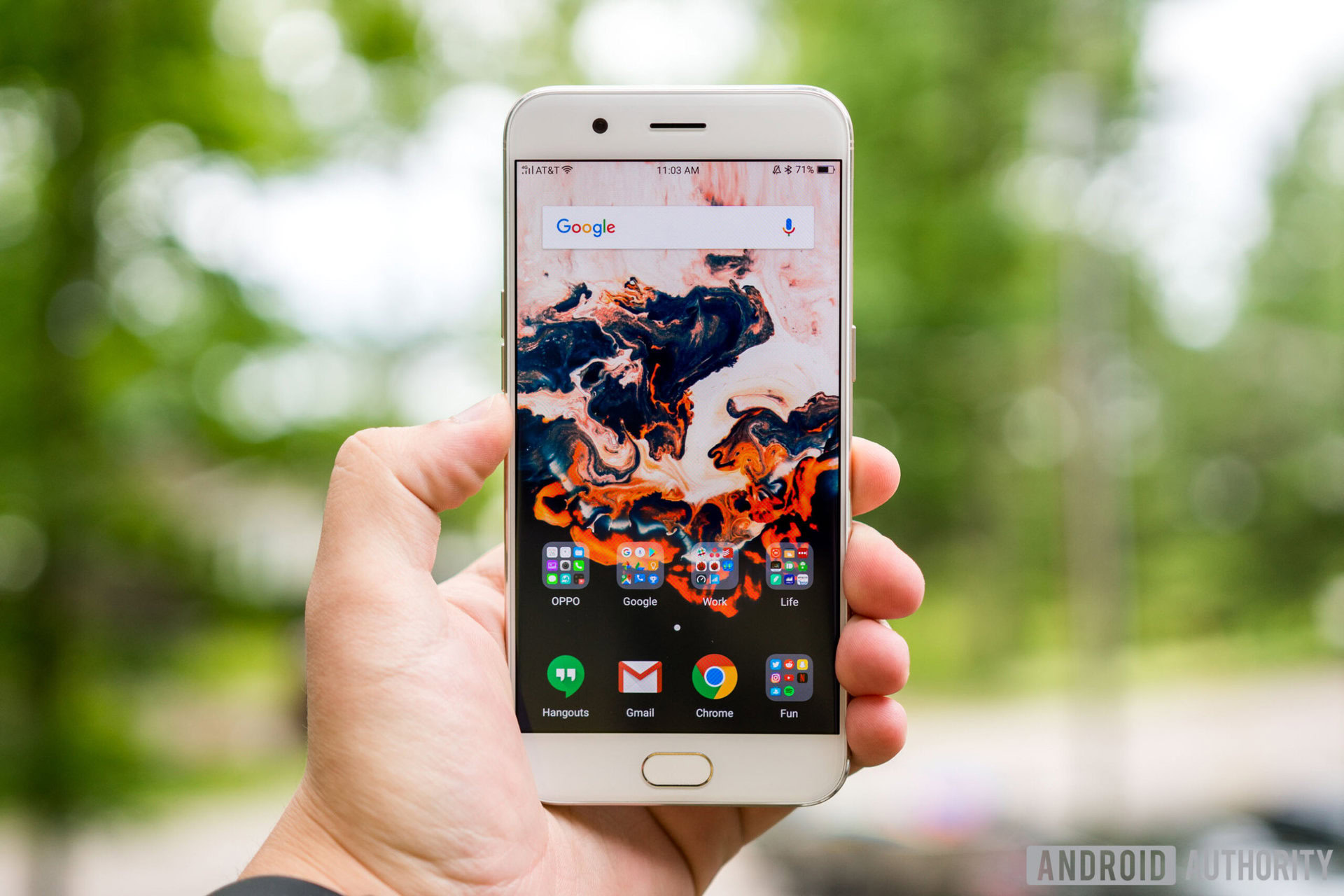
The OPPO R11 has a lot going for it. It has great cameras, a premium all-metal design, and good battery life. For much of OPPO’s audience, these are the vital components of a good smartphone. For those buyers, the R11 may be a good choice.
With that said, the number of compromises that the R11 brings prevents us from recommending it to a global audience. The software user experience is poor, performance is only mediocre, and there are many small issues. On its own, this would seem acceptable given the R11’s affordable pricing.
We recommend that you go with the OnePlus 5 instead
This is a very competitive segment of the larger smartphone market. We recommend that you go with the OnePlus 5 instead, as it offers the same great cameras, a nearly identical design, much better software, and faster performance. While it is slightly more expensive at $479, we believe that it provides a significantly better value for global users.
There you have it — our deep dive into the OPPO R11! Hopefully you found this review informative. Please feel free to leave any questions or comments in the comment section below.